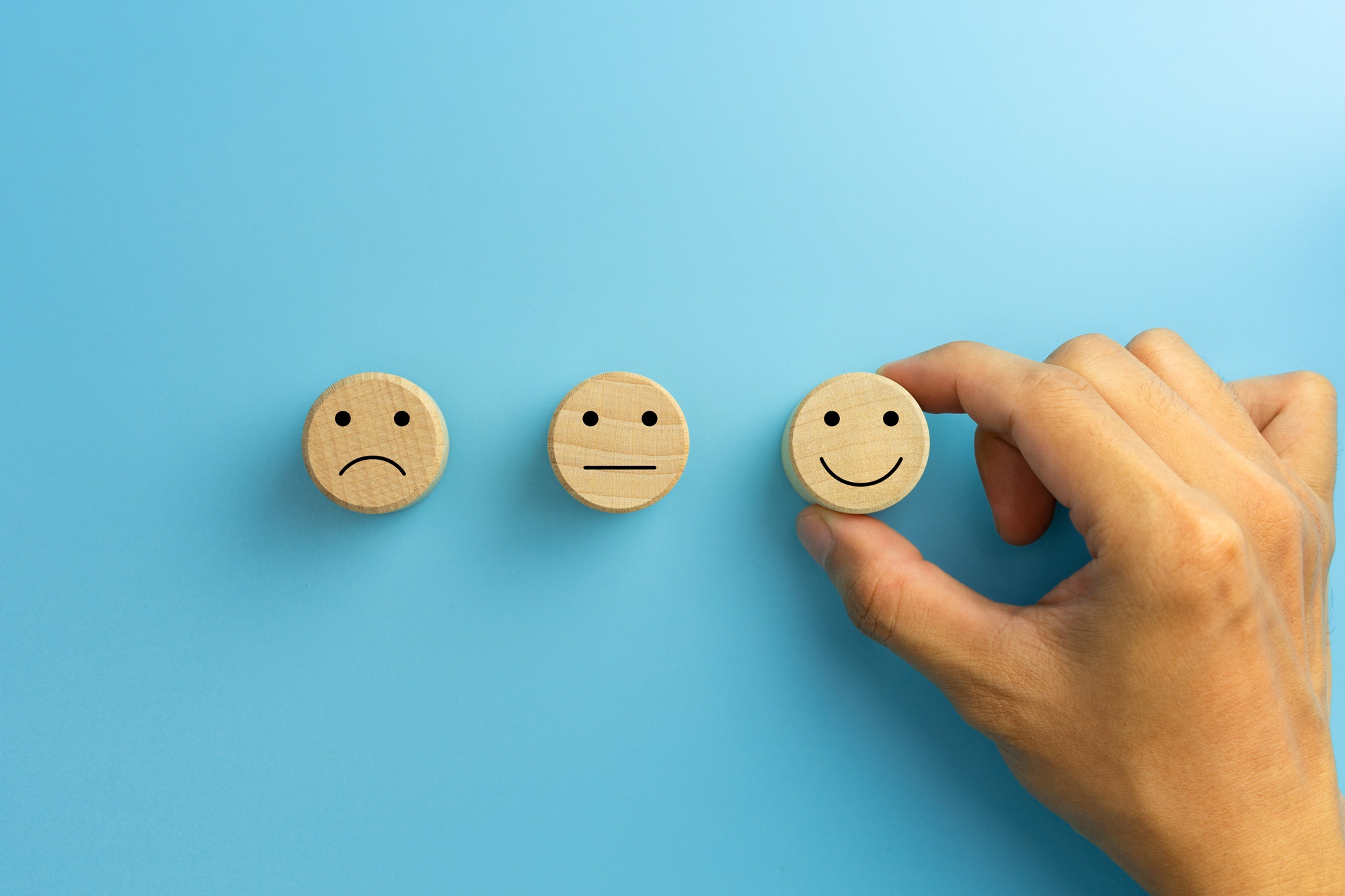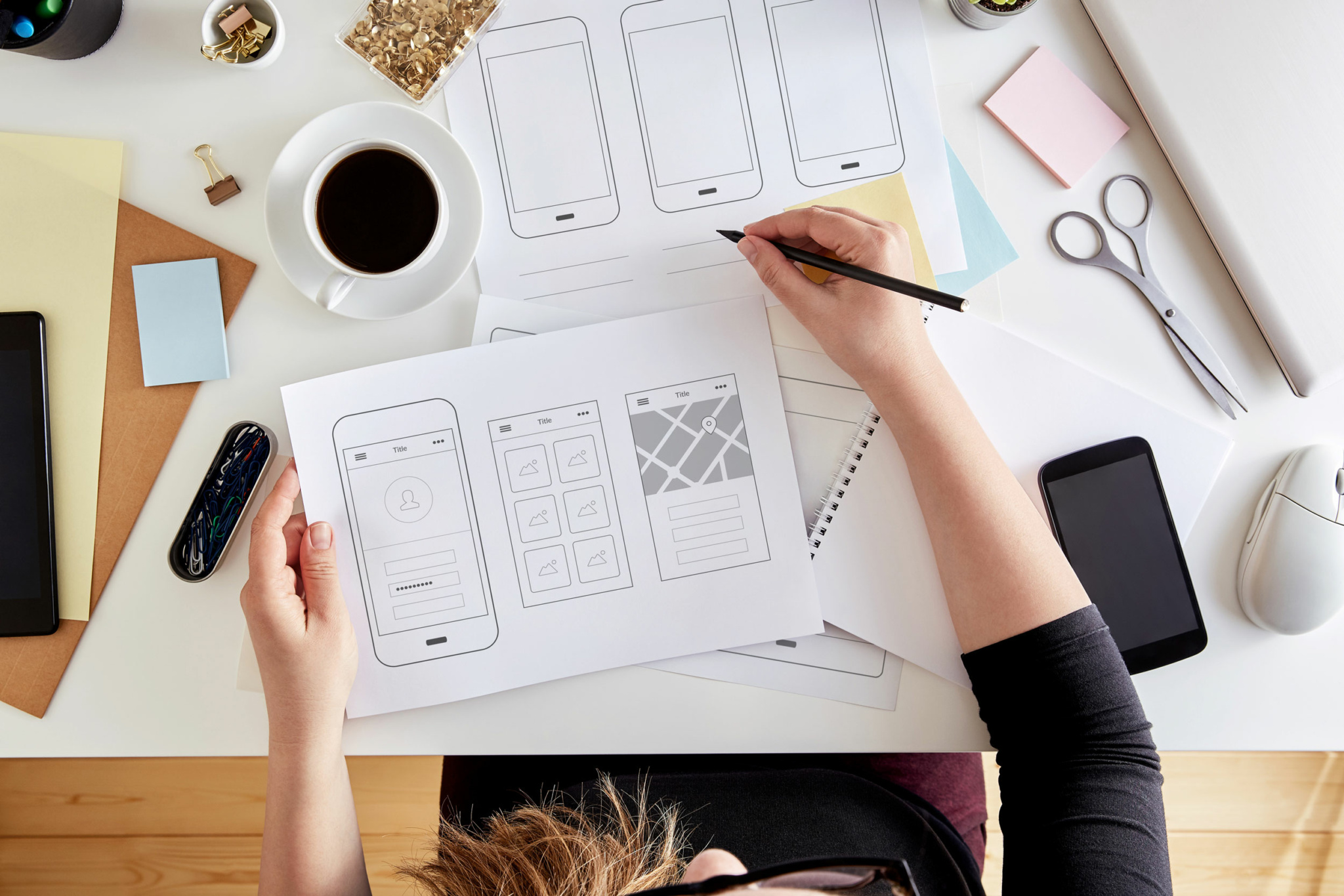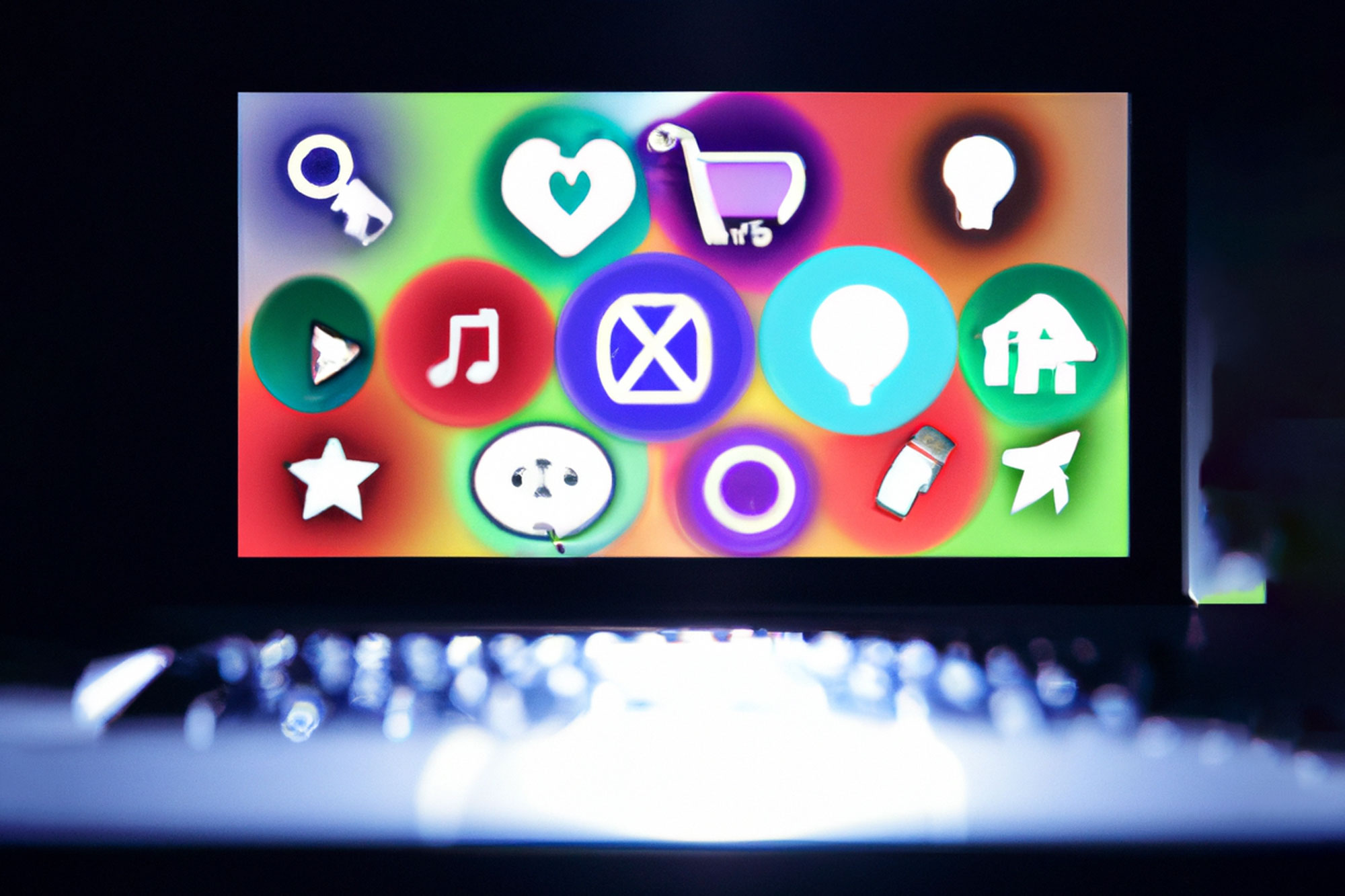What is User Experience Design - Do I need it?
User experience design, or UX design for short, has had a stellar career over the past few years, and it is hard to imagine agencies and job boards without it.
Buzzwords such as "great user experience", "usability", "user story", "persona" etc. give the impression that there is no way around UX design.
But what is the User Experience hype all about? What exactly does User Experience Design mean? And do I need it for my new website or app?

The origins of user experience design
The term "user experience" was coined by the cognitive psychologist and designer Don Norman. However, his 1988 book "The Design of Everyday Things" had little reference to web applications, which are the focus of UX design today.
Key issues in UX design
Norman understands "user experience" as the sum of all experiences that accompany a product or service. In the example of buying a computer, the following questions relate to user experience:
- Where do I pick him up?
- How do I transport it?
- What do I do with the packaging waste?
- How do I connect everything correctly?
- How do I operate it correctly?
In the early 1990s, Apple brought him onto the development team as a "user experience architect," and Don Norman became the first employee to have the term "user experience" in his job title.
To this day, Apple is a prime example of a coherent user experience across all phases of the product lifecycle:
- the product launch, the Apple keynote popular with fans,
- the sale of products in specially designed Apple stores,
- the product delivery in high quality packaging,
- the product quality
- and the long-term update supply.
UX design requirements
This example illustrates that UX design is more than just interaction design of the user interface of an app. Ideally, the user experience also includes and thinks through the touchpoints of the future users outside the application.
Nevertheless, today UX design is predominantly used as a holistic approach to the development of interactive systems (websites, online stores, apps, vehicle operating systems, etc.).
UX design is not design
In 2010, the International Organization for Standardization melded user experience design into ISO standard 9241-210, which defines and details user experience design as a "process for designing systems suitable for use."

User experience design is about creating a "positive user experience". The design philosophy behind UX design can also be referred to as "user centered design".
UX design begins with researching the potential user, their wants and needs, using common empirical methods such as.
- Research,
- Observations
- and surveys,
which can be performed online and offline.
UX design, in this sense, is not design, but a social science method or technique for optimizing usability.
The aesthetic design, emotional appeal to users, memorability, etc. is in the hands of the visual designer or user interface designer (UI designer), who works closely with the UX designer.
Where are the enthusiastic users?
Great User Experience can literally be translated as "Great User Experience", but this translation causes certain misunderstandings in German, because it suggests that UX design creates a strong emotional excitement among users. However, this is obviously not the case.

So, what is meant by "great user experience"?
The ISO standard focuses here on usability. "Usable" simply means that a (in this case) digital product functions as the user expects it to (intuitive usability). And the user is not confronted with any difficulties or obstacles in operating it. The positive user experience arises when operation was easy and successful and the user thus experiences himself as self-efficient.
A brief insight into the methods of UX design
A basic principle of User Centered Design is the iterative approach. The product is tested at different stages of maturity by typical users. User feedback can have an impact on every stage of the design process. In this way, a product can be optimized step by step with regard to its usability.
Figure: Iterative testing in User Centered Design

The user interface designer (UI designer) designs and creates prototypes hand in hand with the UX designer. These are tested by the test persons in the further development process - also with regard to the layout - and improved with the information gained.
Step 1: Analysis
Step one deals with the analysis of the context of use and collects information about the future users and their requirements. In addition to interviews, research and other methods, the following analysis techniques in particular are available for UX design:
Creation of personas
A persona is the most accurate description possible of a typical user as an individually singled out representative of the target group. The persona includes
- Name
- Photo if necessary (to make the persona more imaginable)
- Activity
- Hobbies
- Needs
- and many other properties of the subsequent users in the context of use
The data are obtained from the observation of real people.
- Example: Daniel, 46, works as a project manager in a medium-sized company that sells cloud storage. He has been married for 20 years and has two children (...) He lives in a small town near Munich, where he lives in a detached house with his family. He is a dog lover and has a golden retriever that is getting on in years …
The user interface and user experience designers can continuously refer back to the identified personas during the development process, for example, to check whether the individual personas could successfully operate the application or product.
Customer Journey Mapping
The goal of customer journey mapping is to take a holistic look at user behavior, so that potential weak points in the user experience can be found and strategies can be developed that increase customer satisfaction and loyalty.
All of the customer's touch points related to the product or application over time are visually represented in a customer journey map, capturing experiences, thoughts, feelings, motivations, and other influences at each stage.
Using a retail product as an example, the customer journey begins when a customer first becomes aware of the product, for example via an advertisement. He evaluates the product and compares it with other brands. He then decides to purchase the product, transports it to his home, and subsequently uses it. Depending on the experience, the further journey may lead the customer to purchase another product from that brand, to recommend it or give it a (poor) rating, or to customer service.
Customer journey mapping provides UI/UX design with valuable information for designing and improving applications, products and services (e.g. service hotline, user manuals online, FAQ).
Creating User Stories
User stories are particularly suitable for feature and function planning as well as for the functional extension of existing applications.
Here, each feature is defined in terms of a brief description of the function from the user's point of view. The user story answers the questions of who the user is, what they want to do, and what they want to achieve with it.
The format of a user story is a sentence according to the following pattern:
„As [user type], I want [target/desire], so [benefit].“
- Example: "As a pet owner living in the countryside, I would like to be able to consult a veterinarian at any time via video chat to save me the hassle of traveling to the city with my pet."
The user stories are collected and prioritized in a so-called backlog. For each user story, the effort of implementation can be estimated. To save time, the evaluation of the effort can be done in the form of points (story points), which allow sorting the user stories by effort.
Use Cases
Both user stories and use cases identify users and describe their goals, but use cases are more detailed and describe the use cases and functionality of the application in more concrete terms. A use case is a description of all the individual steps a user takes to achieve a goal.
Step 2: Design
The term "design" is to be understood more broadly in user experience design - as already indicated above. It is primarily about the development of a sequence of steps that lead a user to the goal, i.e. about the function and the optimization of this function. This "experience design" is reflected in the term "user experience design".
The visualization of the developed concept then takes place - depending on the development phase and degree of completion - in the form of wireframes, mockups and prototypes.
The prototype, like the mockup, already depicts the later layout very precisely and additionally simulates the interaction between user and interface. Thus, useful feedback on the user experience can be collected in user tests and can be incorporated into the further course of development.

Step 3: Evaluation
An evaluation of the application can take place both on the basis of prototypes and by testing the application after the program-technical conversion (implementation).
Usability tests
Usability tests can be set up as personal observation of user behavior in a test environment (for example, at the agency's premises) or as a survey of test users during remote tests.
Diary study
Another method of evaluation is the diary study. During a specified reporting period, test users are asked to keep a diary and log specific information about the use of a product.
The study can last from a few days to a few weeks, providing information on longer-term user behavior that can be particularly valuable in app development.
No user experience without UX?
Numerous projects in the field of web design, app design and online store design are within a budget framework that would be blown by user research. What does this mean for usability?
Usability in classic design
Even classic product design, architecture, graphic and web design are not pursued for their own sake. The design guiding principle "Form follows function", which the American architect Louis Sullivan referred to in an essay as early as 1852, and which was later also taken up by BAUHAUS, makes it clear that design was in the service of function and not just aesthetics long before "user experience".
The user is also in the foreground in the classical understanding of design.
Information about the user is central
Determining the target group as precisely as possible is always an integral part of the discussions with the client and the briefing in every industry.
The user groups are described on the basis of demographic factors (age, gender, occupation, hobbies, etc.) or are also narrowed down by classification into sinus milieus or limbic maps.
In addition, target groups are described according to project-specific criteria. In the case of a video consultation app for veterinarians, for example: "Pet owners of small animals who live in rural areas and for whom a trip to the veterinarian means a lot of effort".
So the web designer starts designing only when he knows who the user is.
Tests and user feedback
Depending on the scope of a project, in addition to wireframes and layouts, prototypes are also created to test newly developed functions.
The prototypes first allow the designer himself to test and optimize the processes, as well as gather feedback within the agency.
The development is then sent to the client, who can involve other employees in the testing on behalf of the later users, and - depending on the possibility - also actual customers.
These "informal" user feedbacks are very valuable even without an elaborate experimental setup and are incorporated into the development.
Especially in smaller agencies, where project planners, designers and programmers are naturally in close contact with each other, iteration is practically continuous and agile across all steps.
The implementation phase
In the implementation phase, the layout or prototype is finally drawn in and passed on to development. After programming, further feedback loops follow, which serve to improve usability. The designers' goal is to meet all user usability requirements.
Search engine optimization and UX design
Search engines are also placing an increasingly high priority on usability. Usability has become an important ranking factor, so web applications are analyzed after development using various online tools for search engine optimization.
For example, Google measures - directly or indirectly - the following characteristics of a website and incorporates them into the placement on the search results page:
- Loading time: The website or app should load quickly.
- Mobile friendliness: A website should be optimized for cell phones and be similar user-friendly as on desktop.
- Interactivity: The website should offer the user interaction possibilities.
- Security: The page should be accessible via HTTPS, i.e. SSL encrypted and should not create any security problems due to malware, fraudulent intentions or malicious downloads.
- The content should be easily accessible and the actual reading and viewing experience should not be disrupted by intrusive interstitials, e.g. pop-ups and advertisements.
In addition, post-launch website analytics tools help identify places where usability still has room for improvement, e.g., by analyzing dwell time and bounce rates as direct feedback from actual users.
Conclusion: Do I need UX design?
User Experience Design is a development method based on empirical user research. The User Experience Designer is - within the framework of a development process with a strong division of labor - part of an agile team of project managers (Scrum Master), user interface designers, programmers and other experts.
User and market research, such as interviews, conducting experiments or observations, and other methods are resource intensive, so extensive user experience design is primarily of interest to larger companies developing products for the mass market.
But even with smaller projects, there is no need to fear that usability will be neglected. Even in classic design, high functionality and ease of use should be the focus.
The approach of UX design has made the user perspective even more conscious. Individual methods of UX design, e.g. the creation of personas or user stories can, without much effort, help the web designer to take the user perspective at any time.
And depending on the project scope and budget, agencies with the appropriate know-how can identify suitable elements of user research and user feedback and offer them to clients individually.


